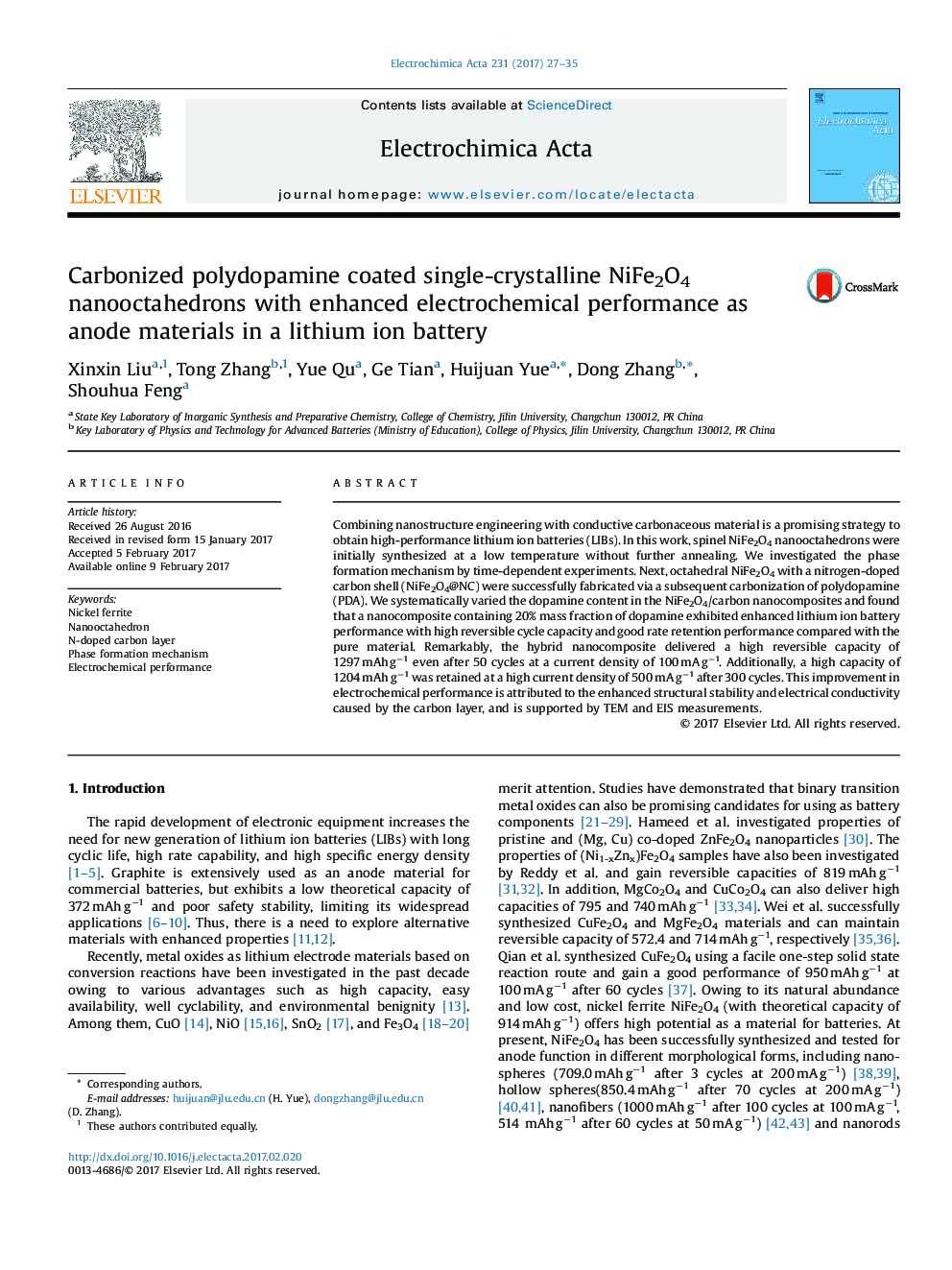| Article ID | Journal | Published Year | Pages | File Type |
|---|---|---|---|---|
| 6471945 | Electrochimica Acta | 2017 | 9 Pages |
â¢NiFe2O4 nanooctahedrons were synthesized by a facile hydrothermal process.â¢A phase formation mechanism was studied by time-dependent experiments.â¢NiFe2O4 with N-doped carbon shell was fabricated via carbonization of polydopamine.â¢NiFe2O4@NC20 showed the best rate capability and cycle stability.
Combining nanostructure engineering with conductive carbonaceous material is a promising strategy to obtain high-performance lithium ion batteries (LIBs). In this work, spinel NiFe2O4 nanooctahedrons were initially synthesized at a low temperature without further annealing. We investigated the phase formation mechanism by time-dependent experiments. Next, octahedral NiFe2O4 with a nitrogen-doped carbon shell (NiFe2O4@NC) were successfully fabricated via a subsequent carbonization of polydopamine (PDA). We systematically varied the dopamine content in the NiFe2O4/carbon nanocomposites and found that a nanocomposite containing 20% mass fraction of dopamine exhibited enhanced lithium ion battery performance with high reversible cycle capacity and good rate retention performance compared with the pure material. Remarkably, the hybrid nanocomposite delivered a high reversible capacity of 1297 mAh gâ1 even after 50 cycles at a current density of 100 mA gâ1. Additionally, a high capacity of 1204 mAh gâ1 was retained at a high current density of 500 mA gâ1 after 300 cycles. This improvement in electrochemical performance is attributed to the enhanced structural stability and electrical conductivity caused by the carbon layer, and is supported by TEM and EIS measurements.
Graphical abstractNiFe2O4@NCweresuccessfullyfabricatedviaasubsequentcarbonizationofpolydopamine.(*) A nanocomposite containing 20% mass fraction of dopamine exhibited enhanced lithium ion battery performance with high reversible cycle capacity and good rate retention performance.Download high-res image (129KB)Download full-size image
